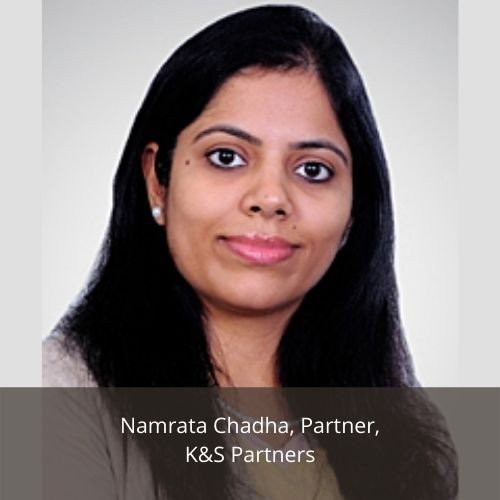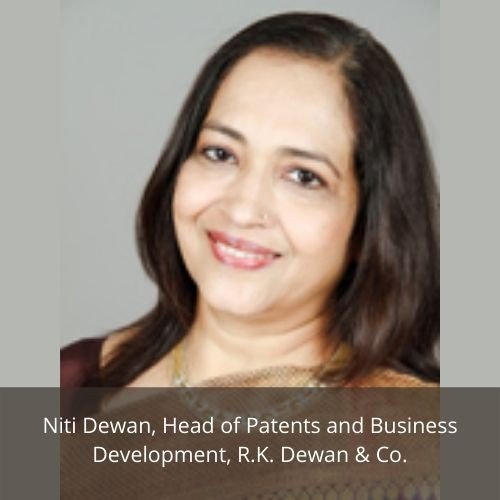Pharm Corp Billionaire
18 November 2020
 Before entering into India’s drug market, you must learn the expertise shared in this feature. Otherwise, you are bound to fail in the prosecution process and ultimately achieve a very disturbing bottom line. Johnny Chan reports.
Before entering into India’s drug market, you must learn the expertise shared in this feature. Otherwise, you are bound to fail in the prosecution process and ultimately achieve a very disturbing bottom line. Johnny Chan reports.
Indian patent law on pharmaceuticals differs from other countries in more than one way, with some of them being the most debated topics in IP domestically, says Amrish Tiwari, a partner at K&S Partners in Gurgaon. “Some of the profound differences are:
(i) Stricter bar on patenting of pharmaceutical inventions in general;
(ii) Some unique obligations during prosecution such as Section 8 requirements (relating to corresponding application details);
(iii) Provision of annual working statement requirement and compulsory licensing;
(iv) Possibility of multiple challenges at various stages of lifecycle of a patent (pre- and post-grant oppositions, revocation before the Intellectual Property Appellate Board and counter-claim in an infringement suit);
(v) No patent term extensions;
(vi) No linkage between patent and drug regulatory provisions.”
While some of these differences apply to non-pharmaceutical patents but combinations of these issues along with stricter patentability requirements pose significantly greater challenges to pharmaceutical patents, says Tiwari.

Indian patent law provides for a stricter bar and an additional test of patentability for pharmaceuticals. “Besides novelty and inventive step, pharmaceutical patents must undergo a test of Section 3(d). As per Section 3(d), mere discovery of a new form of a known substance which does not result in the enhancement of the known efficacy of that substance isn’t patentable under the Act. The explanation to the section states that substances such as salts, esters, polymorphs, etc. shall be considered as the same substance unless they differ significantly over its known efficacy,” he says. “The types of different substances enlisted in the explanation to Section 3(d) are quite large, and the lack of proper interpretation has often led to poor fate for innovations. One of the key concerns is identification of what is a known substance and known efficacy is often inconsistent and left to different interpretations by examiners. Section 3(d) is often being used and abused against the primary patents as well. It is pertinent to note that the Act nowhere bars protection of incremental innovations but only requires that it must pass the additional test of Section 3(d).”
Many a times, these lacks of clarifications in the Act give reasons to opponents for filing groundless serial pre-grant oppositions in pharmaceutical patents. “In fact, the recent IPO Annual report confirms this trend, whereby in 2018-19, a total of 426 pre-grant oppositions were filed, which is about 0.9 percent of the total published applications. Maximum oppositions were filed in pharmaceutical inventions,” says Namrata Chadha, a partner at K&S Partners in Bangalore. “We have seen more than six pre-grant oppositions in many cases. These pre-grant oppositions (which sometimes include even benami (no name) oppositions) unnecessarily delay grants. Additionally, India doesn’t have provisions for term extensions or adjustments — unlike the US, the delays due to prosecution or pre-grant oppositions (or even due to regulatory delays) cannot be re-claimed.”
There is also no linkage in India between patent and marketing approval process for drugs. “This often brings complex challenges to innovators looking to enforce their patents in India,” Chadha says. “As such, it is advisable to be watchful for signs of infringement and take early actions.”

Having said that, the recent trends in local pharmaceutical patent enforcement and litigation have been encouraging. “Not only have the decisions from courts and IPAB been well-reasoned but also swift,” she says. “To sum it up, it can be said that despite the differences from other countries, our patent law is evolving and increasing litigation is helping in shaping up the jurisprudence for pharmaceuticals patenting in India.”
India’s patent statute also has provisions relating to compulsory licensing, though this provision is not unique and has been invoked by more established jurisdictions like Germany, for instance, says Shukadev Khuraijam, a partner at Remfry & Sagar in New Delhi. “On the completion of three years from the grant date, any person interested in working the patented invention may apply for a compulsory license with respect to the invention on the grounds of inadequate supply of the drug within India, unaffordable pricing or non-working of the patented drug in India. In case the grounds are successfully made out, the Controller of Patents may direct the patent holder to grant such a license upon such terms as may be deemed fit.”
However, the patent law is not skewed and quite balanced as it embraces Bolar exemption, by virtue of which, most generic drug manufacturers enjoy the safeguard of the exemption to formulate generic drugs before patent expiration. “Bolar exemption provides generic drug manufacturers ample time to conduct research so they can introduce products into the market soon after the expiry of the innovator’s patents,” Khuraijam says. “Under Bolar, sale, use and construction of patented products for purposes, both within India and abroad by third parties is authorized and legal, provided that the seller ensures the end use and purpose of the sale/export is reasonably related to the R&D of information, in compliance with India’s laws or that of the importing country.”
.jpg)
Developments
Although India is known to be the world’s pharmacy being the third-largest in volume and thirteen largest by value in the pharma sector, the regulatory environment is highly fragmented, says Rachna Bakhru, a partner at RNA, Technology and IP Attorneys in Gurugram. “The lack of uniformity in applying laws and procedures, slow turnaround, and low levels of transparency are areas of concern. Further, the need for digitization adds to the delay in the approval process.”
On the legal side, courts often struggle to balance between providing access to affordable medicines and patent protection. “To protect consumer interests, courts have, in some cases, ruled against the patentees applying the requirements laid out in Section 3(d). In particular, ‘efficacy’ requirement under Section 3(d) has been interpreted to mean ‘therapeutic efficacy.’ As a result, the foreign pharmaceutical companies view it as an impediment in securing patent protection for their drugs, particularly in the case of derivatives of pharmaceutical, chemical compound,” Bakhru says. “Although the objective of section 3(d) is to prevent evergreening, unfortunately, it has become a standard objection in the examination reports issued by the patent office that the applicant needs to overcome. The controllers at the Indian patent office are convinced only with the experimental data regarding enhanced therapeutic effect disregarding efficacy of a derivative compound in terms of physical properties like enhanced drug stability or improvement in physical structure of drug, etc.”
Recognizing the gaps, the government is continuously trying to improve upon various areas to provide a conducive environment for accelerating the growth of the pharma sector. “In May 2020, a high-level committee proposed a single-window system to expedite the approval of new drugs. Accordingly, parallel submission of applications for new drug approval and grant of import license and manufacturing license will be allowed. Similarly, the new Drugs and Clinical Trials Rules, released last year, will enable drugs to be approved in India if they are already approved in the US, UK, EU, Japan, or Australia. This will result in speedy disposal of the new drug approval applications,” she says. “The government is also working to combat unethical drug trials, which is an area of grave concern.”

Recently, the government announced a national health mission with the vision to provide accessible, affordable, and quality healthcare, both preventive and curative, which would be accountable and meanwhile responding to the needs of the people. “As a part of the mission, the medical records of the patients would be available at a central database and accessible to all hospitals and medical practitioners. This will save time and costs of repeat tests and diagnoses,” she adds. “There will be associated privacy concerns which are being observed and whether the data privacy regulation (pending before the parliament) will be sufficient.”
As social distancing became need of the hour to contain Covid-19, the situation gave birth to Telemedicines Practice Guidelines earlier this year. “The guidelines facilitate the delivery and facilitation of health and health-related services including medical care, provider and patient education, health information services, and self-care via telecommunications and digital communications technologies,” she expects. “The guidelines will go a long way in advancing the health of individuals and their communities expeditiously where distance is a critical factor.”
Tips to succeed
Amendment to the claims within the scope of an invention is permissible and filed along with a separate request before the patent office. “Drafting of patent claims carries immense significance in making a particular claim evident. The claim defines the contours of legal right when the patent is granted. A claim is a statement of novel technical features expressed in terms which define the scope of the invention sought to be protected. One can also say that the claims are basically the defining boundary of a patent, which tells third parties what they can and cannot do where the said invention is concerned,” says Gopi Trivedi, senior partner at Y.J. Trivedi & Co. in Gujarat. “Therefore, in order to protect the invention against potential infringers, ‘the claims’ must be drafted meticulously and such can minimize the chance of infringement. Despite the fact that claims are up to interpretations, one must define the metes and bounds of the invention at the time of infringement proceedings. Conclusively, IF YOU DO NOT CLAIM, YOU DISCLAIM.”

Remember — India is an essential market for MNCs. “There is a vast population waiting to be treated that believes in medicines manufactured by MNCs,” says Niti Dewan, head of patents and business development at R.K. Dewan & Co. in Mumbai. “There is also a talented pool of doctors that understand these medicines and a sophisticated industry that is able to re-engineer any medicine and develop cheaper alternatives.”
Yet, Indian patent law still works in favour of MNCs, overall. “The law has evolved from 1970 when patents for compositions and compounds were eliminated, to 2005 where they were reinstated as inventions,” Dewan says. “However, modifications made in 2005 have posed hurdles to MNCs in prosecuting their applications. A major hurdle in this prosecution is the mindset of their patent department which is structured for the international patent system.”
There will have to be a course correction in the thinking of the patent department of these companies when it comes to India. “Most applicants attempt to enter our patent arena via the PCT route that is almost 31 months after their initial filing. This is their first error! India has very strict entry rules — only the documents published at WIPO can be used for entry. No deviation is permitted, except claim deletions! Further, no amendments are permitted except by way of explanation or deletion of clerical error. This fundamental error makes India a graveyard for several good inventions — all because of bad prosecution strategy,” she says. “For the purposes of amendments, India should be treated as a Paris Convention country; therefore entry should be at the 12-month stage. This will allow for having an India-centric patent strategy and a unique patent specification can be filed that is tailored for India. However, as good as an Indian agent may be, s/he cannot do justice to an invention with wrong tools. Alternatively, MNCs should have at least one member of their teams well versed with the Indian patent office prosecuting strategy. Still further, at the time of initial drafting they should consult an expert in such areas. This will considerably improve prosecution and lead to grant.”
Once the patent is granted, MNCs must be watchful for local drug companies that want to clone their wonder drugs. “The DCA and the FDA are the sources where relevant information will be available. MNCs shouldn’t wait for the Indian drug companies to launch their substitutes before initiating action — they should act as quickly as possible,” she adds. “Another good strategy is to divide and rule, which means licensing their patents to at least one or two of their potential competitors — they will then be able to deflate others who would likely come up with inexpensive clones.”

Chances of success in pharma patent prosecution can be maximized by providing data showing the enhanced therapeutic efficacy of the claimed product. “Providing comparative data to establish the enhanced therapeutic efficacy of the claimed compound with respect to known compounds disclosed in cited arts can help overcome Section 3(d) and inventive step objections raised in the examination reports. In addition, it is advisable to draft the specification in such a way that most of the claims are supported by the experimental data provided in the specification and the specification discloses the best method of performing the invention,” Khuraijam says. “Delaying examination and awaiting favourable prosecution outcomes in jurisdictions, especially that of the European Patent Office has much persuasive effect especially for pharmaceutical patents. It goes without saying though that the claims set should pertain to patentable subject matter; for example the grant of second medical use claims in EPO would have no persuasive effect in India while the grant of a Markush structure claim with proper data would sure be persuasive. For patents relating to pharmaceutical compositions, synergistic data showing that the claimed ratio/percentages of the components show synergistic effect, could greatly help in the grant of such.”
Last but not least, it is recommended to conduct due diligence and eliminate any possibility of conflict of interest before filing. “A proper due diligence would save a company from venturing into high-risk unwinnable litigation. Keeping a continuous patent watch, reviewing competitor products, conducting patent invalidity search can greatly help avoid time-consuming and costly lawsuits,” he says. “Additionally, it is advisable to file an infringement suit as soon as the applicant becomes aware.”
Would Covid-19 vaccination be compulsorily licensed? If so, could developers’ earnings be hurt?
This would have to be approached from a realistic angle, a compulsory license would involve a granted patent which would not be the case presently and regular compulsory licenses come into the picture only after three years of a patent grant. “Having said that there are other provisions in the law (Section 100) where even the invention disclosed in a non-granted application may be used by the central government for non-commercial purposes,” Khuraijam says. “Further, there are special provisions (such as Section 92) handling a national emergency or other circumstances of extreme urgency under which the government has the power to declare the grant of a CL even if this mandatory three-year period hasn’t expired.”
We will have to appreciate that even vaccine developers such as AstraZeneca have declared they will not profit from the vaccine during the course of the pandemic, he says. “Given that India has a burgeoning population of more than 1.3 billion, we believe that economies of scale could offset the price differential at which the patentee may have to sell the vaccine in India. While we don’t know how things will eventually play out, we believe that, any pharmaceutical patent to cure/prevent Covid-19, which is unprecedented in reach and effect will sure attract a lot of interest in how it is secured and the final product made available to the people not only in India but also all over the world. Our laws are up to the task and the opinion is that India has a much mature patent system now than 15 years ago, so it would balance the interests of the patentee and the public at large.”






